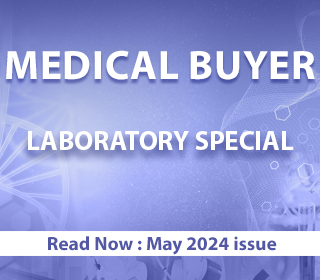Buyers Speak
An aspiring nation needs modern regulatory framework for patient safety

The most important aspect of the National Medical Devices Policy 2023 is its patient-centric approach. The Policy aims to build an innovative and globally competitive industry in India, supported by world-class infrastructure, and in alignment with PM Gati Shakti, Make in India, and Atmanirbhar Bharat programs. The goal is to become a global leader in manufacturing and innovation of medical devices, and increase our global market share from the current 1.5 percent to 10–12 percent over the next 25 years. This will be a huge step forward.
Regretfully, the government is being misled by some administrators and India has slid back by two steps from achieving these global ambitions.
Firstly, by allowing the imports of pre-owned medical equipment and re-manufacturing or re-furbishing of medical imaging systems and other medical electronic equipment, the risk of importing sub-standard products into the country will increase. This will negatively impact the manufacturing and innovation of medical devices in India, slowing down investments in the sector, and discouraging domestic manufacturers. Also, the industry can in no way commercially compete with absymally low-priced imports.
MNCs having no use for obsolete equipment in their own country, dump this equipment in India. Other countries as China, Vietnam, Thailand, and Indonesia have strictly banned the imports of such equipment.
Patient safety too is hugely compromised with usage of obsolete technology and absence of calibration and validated performance and attempts for maintenance by jugaads.
This policy needs a review and rollback.
It is shocking that FICCI, set up as the voice of India’s business and industry is at the forefront of this, and is influencing the policy makers.
One step forward, two steps back
The second step backward. The New Bill on Drugs, Cosmetics & Devices that the MoH&FW had listed for tabling to the Parliament this monsoon session with the intended aim of ensuring higher Patient Safety is a flawed bill. Drafted by a committee of regulators to empower themselves as a huge conflict of interest, without following due democratic pre legislative processes, it continues to seek to regulate devices alongside drugs under the garb of a separate chapter for some provisions instead of using the opportunity to bring in a progressive modern separate law for addressing patient safety needs and using the earlier separate visionary NITI Aayog draft Medical Devices Bill (Safety, Effectiveness & Innovation) Bill 2019 or using impactful references the separate medical devices legislations as in Canada, UK, EU, Brazil, Japan, Saudi Arabia etc.
Engineers and scientists who step forward to design and develop products need to do so fearlessly following defined simple regulatory pathways. Manufacturers similarly need to be disciplined and compliant to regulatory conformity requirements, and prove conformity by third-party certification or testing to accredited certification bodies and laboratories. The regulators and QCI’s NABCB need to jointly supervise the performance of these certification bodies and laboratories to ensure competent staff with relevant expertise is auditing manufacturers and seeking continuous improvement in quality management systems and product performance. India needs to move away from the inspector raj, with inspectors empowered to search and seize from licensed manufacturers.
The wise Parliamentarians in the Health & Family Welfare Committee believes that the government should not afford regulation of medical devices by pharma experts. Therefore, a separate regulatory infrastructure for medical devices with a dedicated workforce instead of adjoining with the CDSCO would serve the purpose better. The Committee recommends the Ministry to introduce stringent standards and certification processes (particularly for Class C&D products) comparable to global standards. The Ministry, along with compulsory compliance to Quality Management System as per schedule 5 of the MDR, 2017, should also allow cognizance to 3rd party voluntary assurance schemes like Quality Council of India’s ICMED 13485.
The Parliament Health Committee appreciates the steps taken by the Government to strengthen CDSCO, however since MOH&FW is the key stakeholder in medical devices, the inter-ministry coordination for the promotion of medical devices should be done by MOH&FW only.
Time will tell if the dog wags the tail, or the tail will continue to wag the dog!
Views expressed are the personal opinion of the author.












